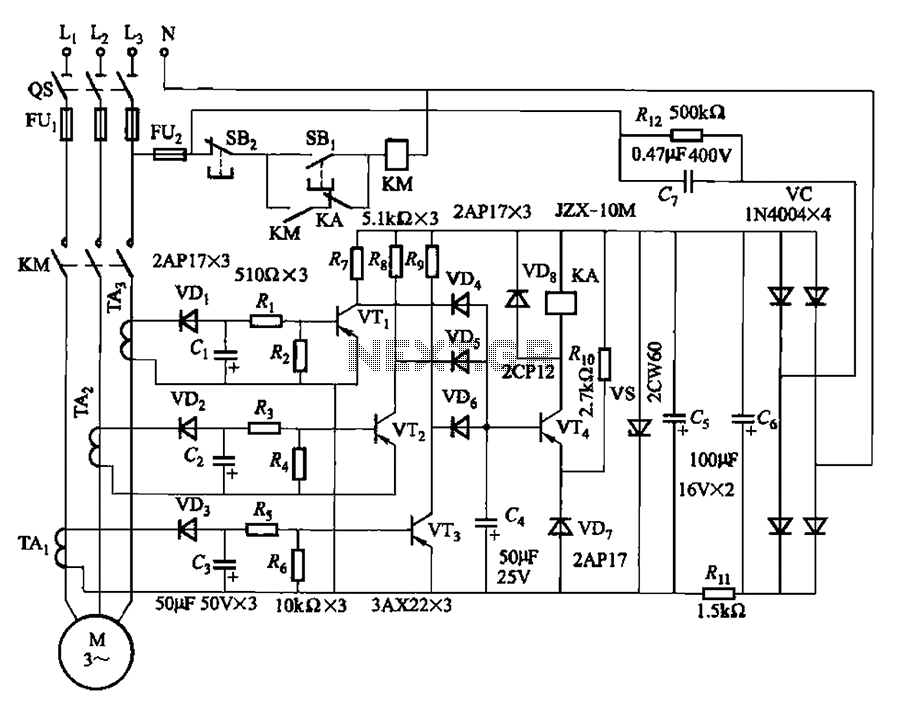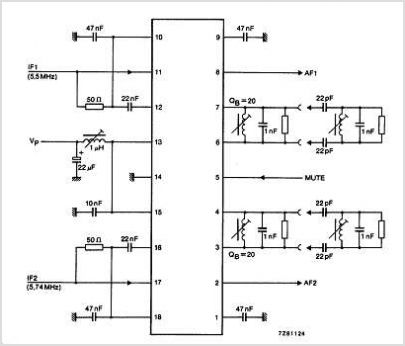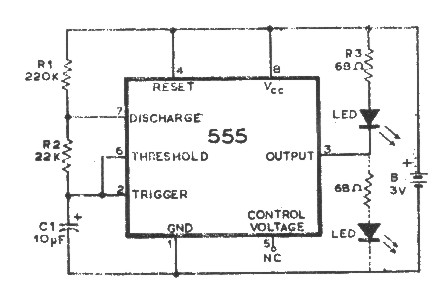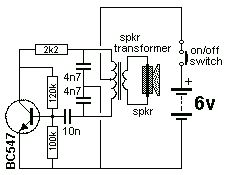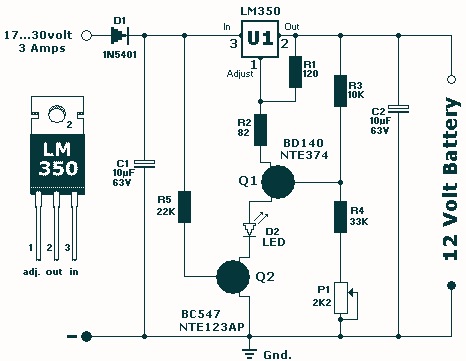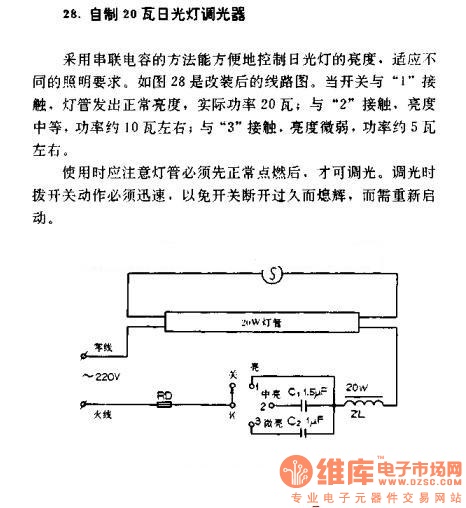
battery charger circuit
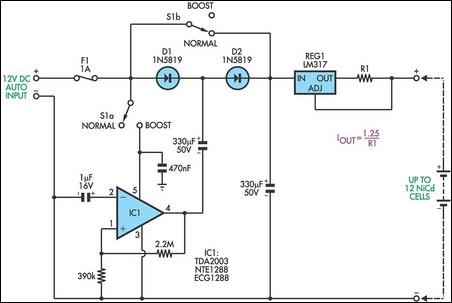
This circuit is designed to charge between one and twelve NiCd cells using a car battery. When switch S1 is in the "normal" position, it can charge up to six cells. The LM317 regulator functions as a simple current source, delivering approximately 530mA when R1 is set to 2.35Ω (using two 4.7Ω resistors in parallel). For charging more than six cells, S1 should be switched to the "boost" position. In this configuration, power is supplied to IC1, a 10W (or 20W) audio power amplifier. The positive feedback from its output (pin 4) to the non-inverting input (pin 1) enables IC1 to operate as a square wave oscillator. This square wave signal is then coupled to the junction of Schottky diodes D1 and D2 through a 330 µF capacitor, creating a conventional charge-pump voltage doubler. This setup generates over 20V (when unloaded) at the input to REG1, which is sufficient to charge a maximum of twelve cells.
The charging circuit utilizes the LM317 voltage regulator, which is configured to operate in two modes based on the position of switch S1. In the "normal" mode, the circuit is optimized for charging up to six NiCd cells, where the current output is regulated to approximately 530mA. The resistor R1 plays a critical role in setting the output current; specifically, it is calculated to be 2.35Ω through the use of two 4.7Ω resistors in parallel, ensuring the current remains within safe limits for the cells.
When more than six cells need to be charged, the circuit transitions to "boost" mode by toggling switch S1. In this mode, the circuit powers IC1, which serves as an audio power amplifier rated at either 10W or 20W. The design incorporates positive feedback from the output pin (pin 4) back to the non-inverting input (pin 1) of IC1, allowing it to generate a square wave oscillation. This square wave is essential for the operation of the charge-pump voltage doubler, which consists of Schottky diodes D1 and D2 and a coupling capacitor of 330 µF.
The charge-pump configuration effectively doubles the voltage, producing over 20V at the input to REG1, which is crucial for charging the maximum of twelve NiCd cells. This voltage is sufficient to overcome the charging requirements of the cells, ensuring efficient and effective charging. The design emphasizes reliability and performance, making it suitable for applications where multiple NiCd cells need to be charged from a single car battery source.This handy circuit can be used to charge from one to 12 NiCd cells from a car battery. Up to six cells can be charged with switch S1 in the "normal" position. The LM317regulator operates as a simple current source, providing about 530mA when R1 = 2. 35O (two 4. 7O resistors in parallel). For more than six cells, S1 is set to the "boost" position. Th is applies powers to IC1, a 10W (or 20W) audio power amplifier. Positive feedback from its output (pin 4) to non-inverting input (pin 1) causes IC1 to act as a square wave oscillator. This square wave signal is coupled to the junction of Schottky diodes D1 and D2 via a 330 µF capacitor, forming a conventional charge-pump voltage doubler.
Over 20V (unloaded) appears at the input to REG1 - enough to charge a maximum of 12 cells! 🔗 External reference
The charging circuit utilizes the LM317 voltage regulator, which is configured to operate in two modes based on the position of switch S1. In the "normal" mode, the circuit is optimized for charging up to six NiCd cells, where the current output is regulated to approximately 530mA. The resistor R1 plays a critical role in setting the output current; specifically, it is calculated to be 2.35Ω through the use of two 4.7Ω resistors in parallel, ensuring the current remains within safe limits for the cells.
When more than six cells need to be charged, the circuit transitions to "boost" mode by toggling switch S1. In this mode, the circuit powers IC1, which serves as an audio power amplifier rated at either 10W or 20W. The design incorporates positive feedback from the output pin (pin 4) back to the non-inverting input (pin 1) of IC1, allowing it to generate a square wave oscillation. This square wave is essential for the operation of the charge-pump voltage doubler, which consists of Schottky diodes D1 and D2 and a coupling capacitor of 330 µF.
The charge-pump configuration effectively doubles the voltage, producing over 20V at the input to REG1, which is crucial for charging the maximum of twelve NiCd cells. This voltage is sufficient to overcome the charging requirements of the cells, ensuring efficient and effective charging. The design emphasizes reliability and performance, making it suitable for applications where multiple NiCd cells need to be charged from a single car battery source.This handy circuit can be used to charge from one to 12 NiCd cells from a car battery. Up to six cells can be charged with switch S1 in the "normal" position. The LM317regulator operates as a simple current source, providing about 530mA when R1 = 2. 35O (two 4. 7O resistors in parallel). For more than six cells, S1 is set to the "boost" position. Th is applies powers to IC1, a 10W (or 20W) audio power amplifier. Positive feedback from its output (pin 4) to non-inverting input (pin 1) causes IC1 to act as a square wave oscillator. This square wave signal is coupled to the junction of Schottky diodes D1 and D2 via a 330 µF capacitor, forming a conventional charge-pump voltage doubler.
Over 20V (unloaded) appears at the input to REG1 - enough to charge a maximum of 12 cells! 🔗 External reference
Warning: include(partials/cookie-banner.php): Failed to open stream: Permission denied in /var/www/html/nextgr/view-circuit.php on line 713
Warning: include(): Failed opening 'partials/cookie-banner.php' for inclusion (include_path='.:/usr/share/php') in /var/www/html/nextgr/view-circuit.php on line 713
